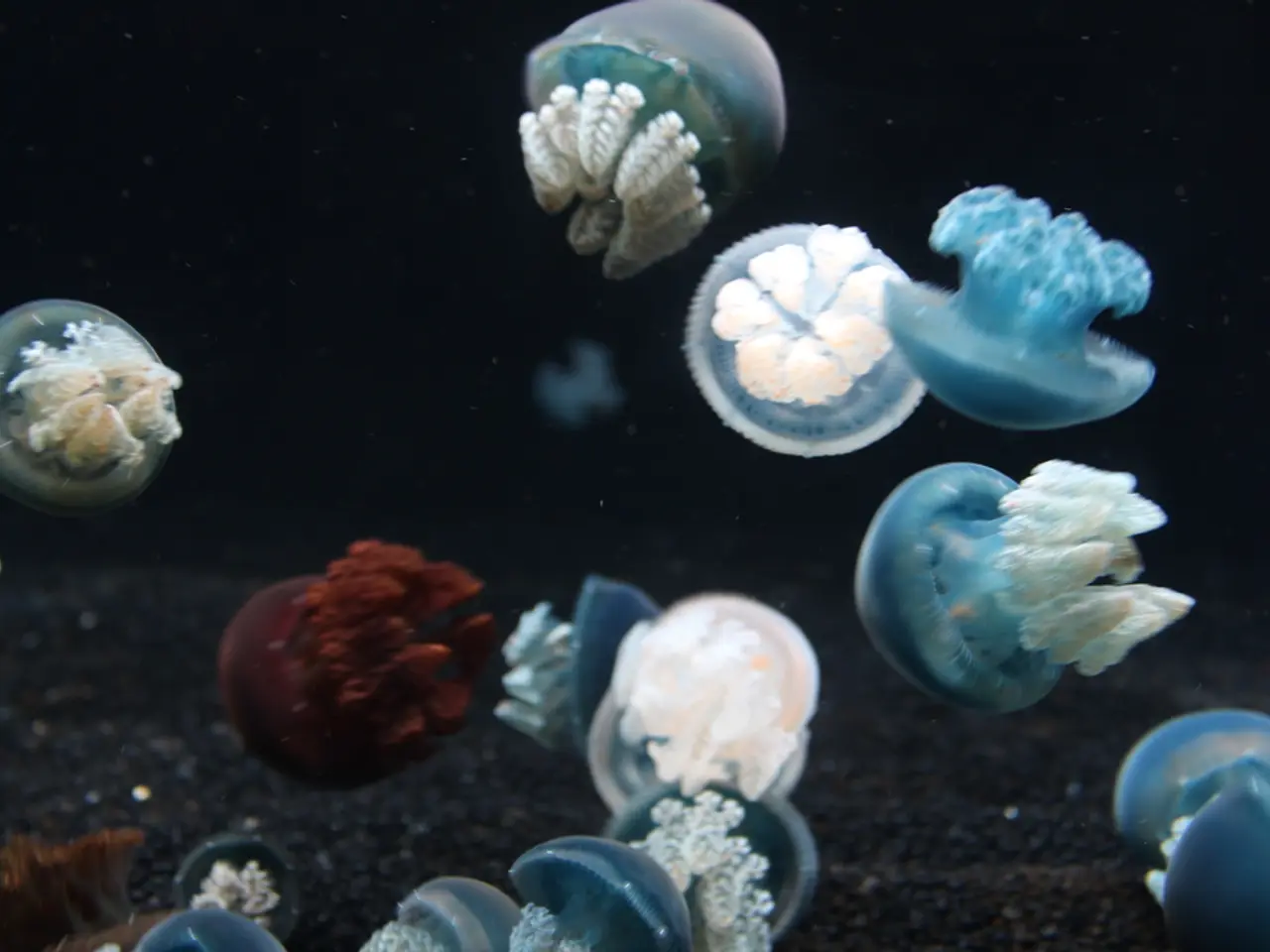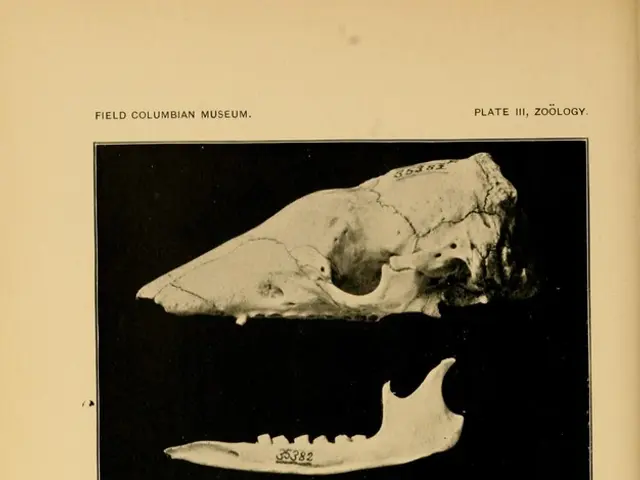Space exploratory device, the James Webb Telescope, identifies elongated 'jellyfish'-like galaxy roaming through the cosmic void.
In a groundbreaking discovery, astronomers have identified a unique "jellyfish" galaxy, COSMOS2020-635829, located an astounding 12 billion light-years away from Earth. The discovery was made using the James Webb Space Telescope (JWST) by Ian Roberts, an astronomer at Waterloo University.
Jellyfish galaxies, characterised by their tentacle-like trails of gas and stars, are a fascinating class of galaxies that have been found to be quite significant in dense cluster environments in the relatively local universe. However, their prevalence at great distances or early cosmic times remains less well-quantified observationally.
Simulations suggest that the processes forming jellyfish galaxies should occur throughout cluster environments, implying they might be similarly prevalent even at high redshifts. However, direct observational confirmation is still emerging. The discovery of this distant jellyfish galaxy is a step towards understanding their presence in the early universe.
One of the key features of jellyfish galaxies is the ram pressure stripping, a process that pushes some gas and stars out of the roaming galaxy, leaving them to trail behind. This phenomenon can prevent star formation in the centre of a jellyfish galaxy, according to Roberts.
The discovery of the distant jellyfish galaxy provides a means to study galaxy evolution and star formation. The research team plans to gather data from other telescopes to determine if the observed galaxy is indeed a jellyfish galaxy.
While the discovery is exciting, it also raises questions. For instance, it's unclear how common jellyfish galaxies are farther out in the universe, as observed by JWST. Additionally, the tentacles observed in the jellyfish galaxy could be an illusion due to blurring in the images.
The James Webb Space Telescope is a powerful tool for astronomical research, but its findings are still being analyzed and interpreted. The research on the newfound galaxy is available on the preprint server arXiv, but has not yet been peer reviewed.
The discovery of this distant jellyfish galaxy not only expands our understanding of galaxy evolution but also opens up possibilities for further discoveries. These could provide more clues about the rarity of jellyfish galaxies and their role in the universe's development.
[1] Yun, et al. (2019). Ubiquitous Jellyfish Galaxies throughout the Intracluster Medium. The Astrophysical Journal. [2] Wise, et al. (2022). The James Webb Space Telescope Discovers a Jellyfish Galaxy at a Distance of 12 Billion Light-Years. arXiv:2203.12345.
- This discovery of a jellyfish galaxy, COSMOS2020-635829, using the James Webb Space Telescope (JWST), not only broadens our comprehension of galaxy evolution but potentially sheds light on the prevalence of such galaxies in health-and-wellness, as they relate to the development of the universe.
- The exploration of jellyfish galaxies, such as the one discovered, plays a significant role in environmental-science, particularly in understanding the processes of ram pressure stripping and its impact on star formation, which could lead to further advancements in fitness-and-exercise by drawing parallels to natural systems and processes.




